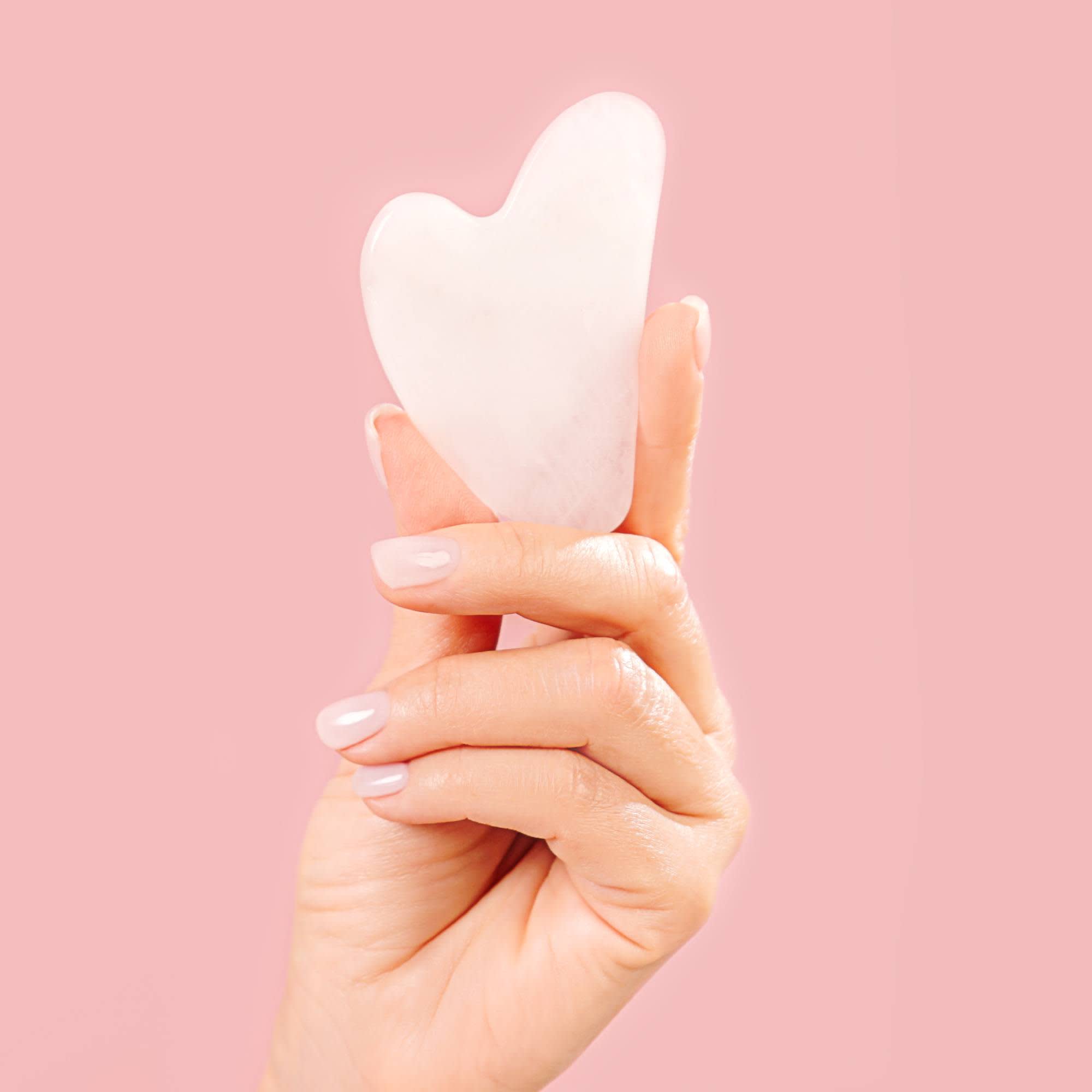
- POPSUGAR Australia
- Beauty
- Here’s Why You Need to Try Gua Sha if You Suffer from TMD
Here’s Why You Need to Try Gua Sha if You Suffer from TMD

The beauty world never rests — no, not even after they complete their nighttime skincare routine. It seems every day a new trend or product hailed as revolutionary pops up on the internet, making people believe they need to add it to their routine.
As someone who has worked in beauty and loves everything skincare and makeup related, I’ve come to spot gimmicks. You know, those “must-have” items that tend to come and go, the ones that don’t really do anything other than gather dust deep in your drawers.
However, there has been an instance where I’ve been proven wrong, and that’s when I tried gua sha for the first time. Gua sha is a practice of Chinese medicine, where you hold a flat handheld tool — typically made from horn, yak bone or crystal — and glide it across your skin to help increase blood flow and stimulate the lymphatic system.
Despite gua sha being around for generations, it’s a fairly new concept to the Western world. Everyone from celebrities to estheticians are jumping on the bandwagon, and for good reason.
For the last two years, I’ve been suffering from temporomandibular disorder, more commonly known as TMD. It all started after I was rushed to the emergency and had four of my wisdom teeth extracted. While I felt enormous relief from the removal of my impacted teeth, I started dealing with something far more difficult to treat.
TMD is a disorder of the temporomandibular joints, which connects the jaw to the skull. The symptoms can vary in severity, but a common habit for those who have TMD is constantly clenching or grinding their teeth, especially when they’re asleep at night.
I’m a clencher, and most of the time, I don’t even know I’m doing it. It took a while for me to figure out why the habit formed after my wisdom teeth surgery, but I now know it’s because the removal of four teeth caused my bite to shift, resulting in the top half of my teeth putting pressure on the bottom half.
While it hasn’t been life-threatening in any way, TMD can be hard to live with. Most days I wake up with searing pain in my masseter muscles (the muscle we use to chew) and my face can appear puffy and inflamed first thing in the morning.
In comes gua sha. I decided to take a crack at it after I woke up and had extreme pain from clenching all night. At that point, I was at my wits’ end and was willing to try anything to not only make the stabbing sensation go away, but also bring the swelling in my face down.
I found a YouTube video by creator Hello Natural Maven, and got to work. The first step was to cleanse the face and prepare the skin with facial oil. I slathered on my Vela Days Oil Infusion, to help give the gua sha tool a bit of a slip. Then, I grabbed my Aceology Rose Quartz Gua Sha Facial Massager and began gliding the tool across my face.
It took a bit of getting used to, and I definitely did not know what I was doing during my first attempt, but once I got the hang of it, it was fairly straightforward.
Immediately after, I noticed the pain had subsided and the puffiness in my face was pretty much gone. For the first time in a long time, I felt relief, and while it’s not a permanent fix, it’s a great temporary solution for those in the same boat as me.
Gua sha isn’t only reserved for those who suffer from TMD. The practice has a long list of benefits from sculpting facial muscles to producing more collagen.
How Often Should You Gua Sha?
It’s recommended to gua sha once every seven days, but of course, the frequency is dependent on your skin type and tolerance. Personally, I perform gua sha every second day because that’s how often I feel pain. However, if you don’t suffer from TMD then you can get away with it once or twice a week.


